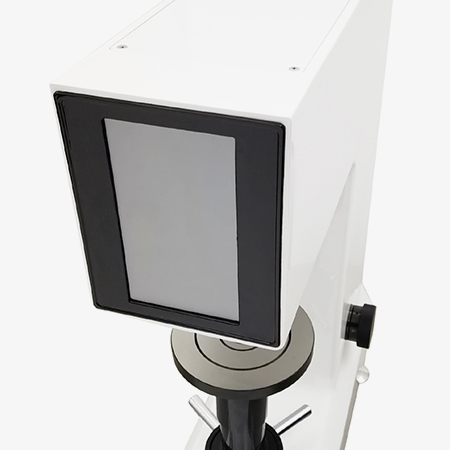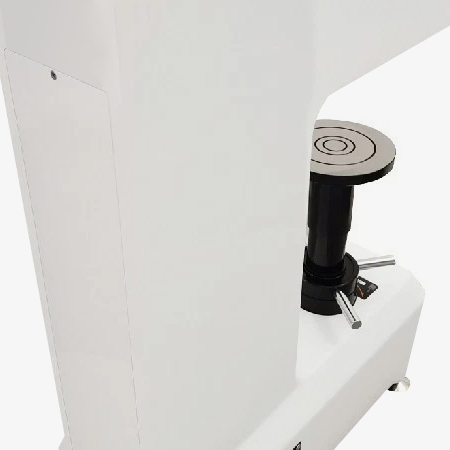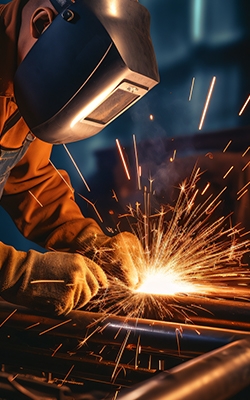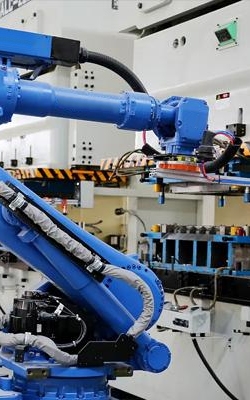A touch screen digital Rockwell hardness tester is an advanced device used to measure the hardness of metals and alloys using the Rockwell scale. Unlike traditional models, it features a digital interface with a touch screen display, offering improved user experience and precision. The digital system minimizes human error, increases testing efficiency, and ensures consistent and accurate results.

Digital Rockwell Tester With a Touch Screen
- User-Friendly Interface. The touch screen interface provides an intuitive and interactive way to operate the hardness tester. Unlike traditional models with buttons or knobs, touch screens allow users to easily navigate through menus, configure settings with just a few taps.
- Data Storage and Export Capabilities. Digital Rockwell tester with touch screen often includes built-in data storage that can save two hundred test results. This data can be exported via USB, Ethernet. This facilitates better traceability, reporting, and compliance with industry standards.

Rockwell Hardness Machine Adopts Cast Iron Material
- Superior Structural Stability. Cast iron is well-known for its rigidity and dimensional stability. In a Rockwell hardness testing machine, structural integrity is critical because any flexing or vibration can distort the force application and, consequently, the accuracy of the hardness readings. Cast iron minimizes deflection under load due to its high modulus of elasticity.
- Long-Term Durability. Cast iron is highly resistant to wear and deformation, making it ideal for the demanding conditions under which the Rockwell hardness tester operates. The machine is often used for years in industrial environments. The cast iron frame provides a robust and long-lasting base.
Applications
Rockwell hardness testers are widely used in various industries to measure the hardness of materials, particularly metals and alloys. One major application field is the metallurgical industry, where it ensures the quality and uniformity of steel, aluminum, and other metal products. In automotive manufacturing, Rockwell hardness testing is used to evaluate engine components, gears, and axles for wear resistance and durability.

Metal Processing

Mechanical Manufacturing

Laboratory

Metallurgical Industry
| Model | SISCO-HT-HRTS-150 |
| Power Supply | 220V/110V |
| Initial Test Force | 10kgf (98.07N), tolerance ±2% |
| Total Test Force | 60kgf (588.4N), 100kgf (980.7N), 150kgf (1471N)±1% |
| Rockwell Scale | HRA, HRB, HRC, HRD, HRE, HRF, HRG, HRH, HRK |
| Accuracy | 0.1HR |
| Dwell Time | 1-60s |
| Hardness Reading | Touch screen LCD display |
| Allowable Maximum Height of the Tested Piece | 170mm |
| Distance From the Center of the Pressure Head to the Fuselage | 165mm |
| Dimension (L*W*H) | 550*220*730mm |
| Net Weight | About 85kg |
Q1: What is a Rockwell hardness tester?
A1: A Rockwell hardness tester is a device used to measure the hardness of materials, typically metals and alloys, by assessing their resistance to indentation. It operates by pressing a steel or carbide ball, or a diamond cone (indenter), into the material's surface under a specific load. The depth of the indentation is then measured, which determines the Rockwell hardness number (HR).
Q2: What factors can affect the accuracy of Rockwell hardness tester readings?
A2: Several factors can affect the accuracy of Rockwell hardness gauge readings. Surface preparation is critical; rough, dirty, or uneven surfaces can distort results. Test specimen thickness must meet minimum requirements to avoid substrate influence. Incorrect or worn indenters, improper test loads, or mechanical misalignment of the tester can lead to errors.
Q3: What maintenance is required for a Rockwell hardness tester?
A3: Maintenance for a Rockwell hardness tester includes regular cleaning to remove dust and debris from the indenter and anvil. Ensure the indenter is free from damage or wear. Check for any loose screws or parts and tighten them if needed. Store the tester in a dry, dust-free environment to prevent corrosion.
Tips: Does touch screen digital Rockwell hardness tester have a built-in printer?
Yes, this touch screen digital Rockwell hardness tester with a built-in micro printer. The built-in printer provides immediate printouts of test results, especially in quality control environments. This eliminates the need for manual data recording, saving time and minimizing errors.
Thank you for buying industrial test and measurement equipment on SISCO.com, all products sold by SISCO and the partner cover a 12 months warranty, effective from the date of receiving the products.
What is covered?
SISCO is responsible for providing free spare parts, and free technical support to assist the customer to repair the defective products until the problem is solved.
What is not covered?
- Product purchased from anyone other than a SISCO store or a SISCO authorized reseller.
- Expendable parts.
- Routine cleaning or normal cosmetic and mechanical wear.
- Damage from misuse, abuse or neglect.
- Damage from use of parts other than SISCO approved.
- Damage from use outside the product’s usage or storage parameters.
- Damage from use of parts not sold by SISCO.
- Damage from modification or incorporation into other products.
- Damage from repair or replacement of warranted parts by a service provider other than a SISCO authorized service provider.
- Damage caused by the application environment not meeting the product usage requirements and the failure to perform preventive maintenance.

